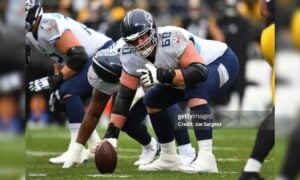It’s impossible to begrudge a college prospect for training for the pre-draft process. It’s the ultimate job interview in the world of professional football. In a way, everything that they have put into their lives up to that point is building up to that one three-day span in April or May during which 255 names are called.
They train, however, in a way that differs from that of preparing to play football. They train to become as elite an athlete as they can. They train to master specific tests that are intended to offer a reflection of what they are capable of doing on the field. Whether or not it accurately reflects the player is secondary. It’s just another part of teams’ evaluation process.
Still, it doesn’t make it easier for the, or their coaches, once they do get into the league, and as Pittsburgh Steelers defensive coordinator Keith Butler explained, it can actually be a detriment to them, and their bodies, early on.
“The hard thing about this whole thing is the education of the players before they get to here for the minicamp”, he told Missi Matthews during a sit-down interview on the team’s website. “And getting to those guys and telling them how it’s going to be. Because they’re going to be running around all the time, and they’re going to be sprinting, and it’s not like they’re going to be working towards testing”.
He explained that “what happens is in the draft process, those guys are more worried about their 40 time as opposed to what they’re going to be doing on the football field. So there’s a little bit of a conflict there in that they’re working out for their Pro Days and stuff like that in the offseason”.
Then they come back to football reality and find that they are not actually in football shape. Which is why you might hear comments to the effect of getting back into football shape from players after they are drafted, because some of them know as well as the coaches do.
“When they do this and go through all these plays and defenses and run as hard as they can and move as quick as they do, then it puts a strain on their muscles, in particular their groin muscles and their hamstrings”, Butler said about what happens if players coming off their pre-draft workouts overwork early on.
“If they pull a muscle then obviously they’re not going to be on the field, and if they’re not on the field, it makes it a little bit harder for them to learn our defense”. And so that not only sets them back, it sets the team back as well, especially if it’s a young player they were counting on to contribute.
But the truth is that these workout numbers have become an important standard upon which players are judged. While they are just one piece in a larger puzzle, it is a valued one. It’s all about knowing how much is means for each individual player, especially when it comes to more underdeveloped ones.








